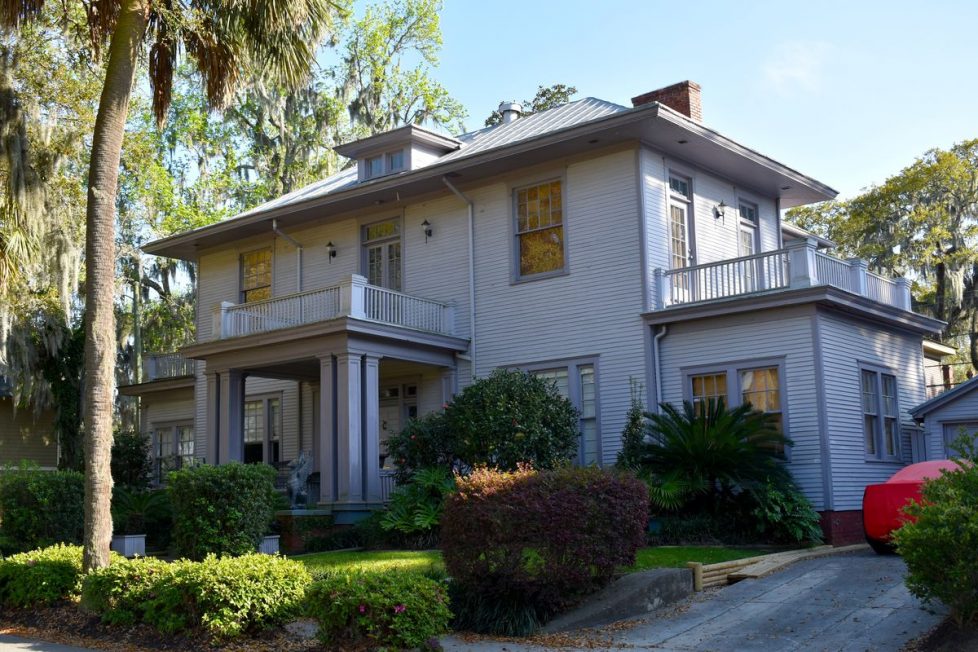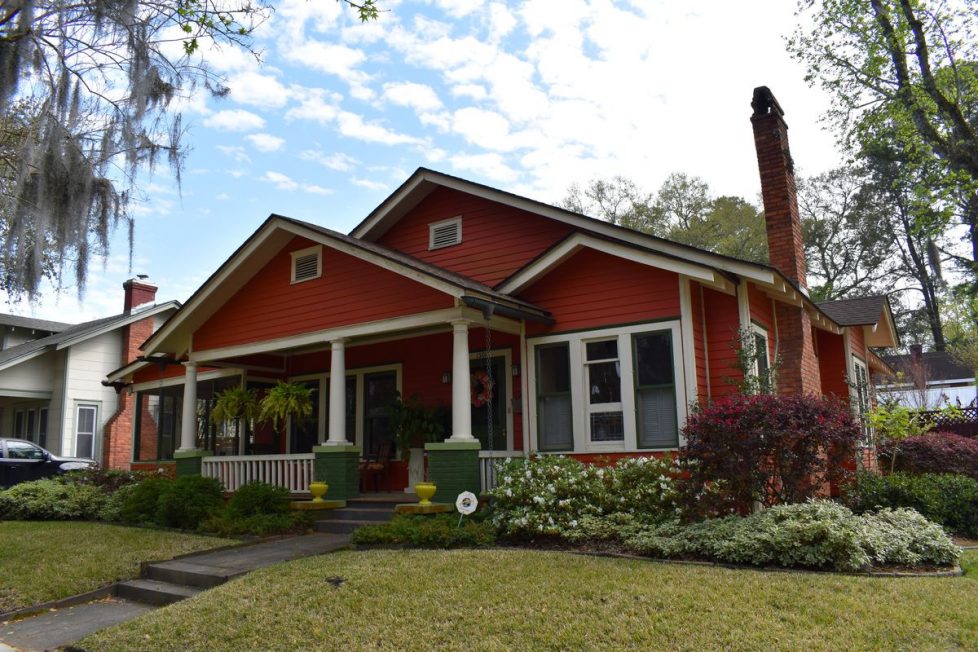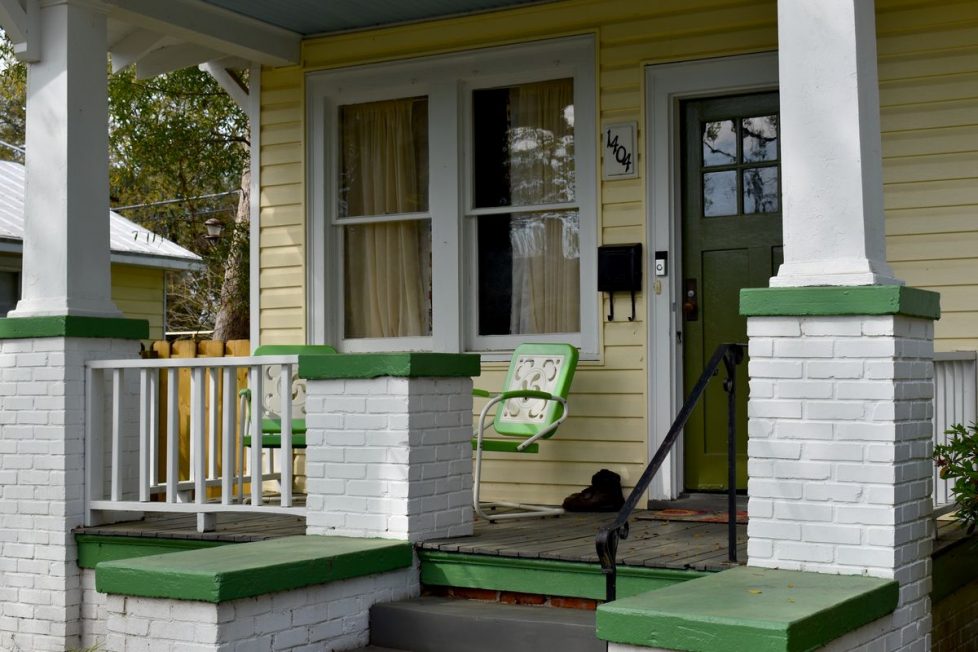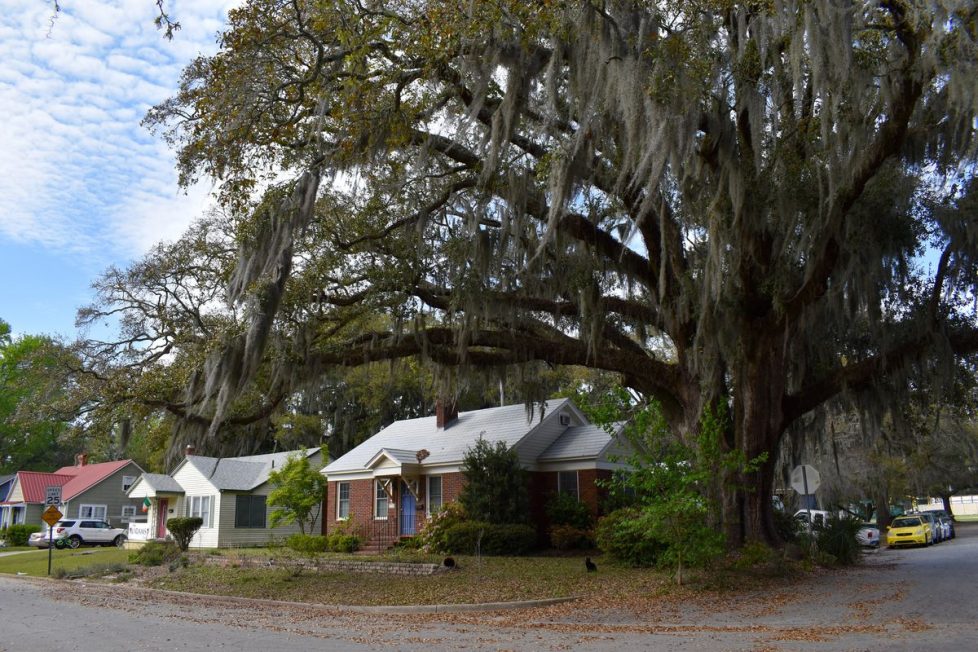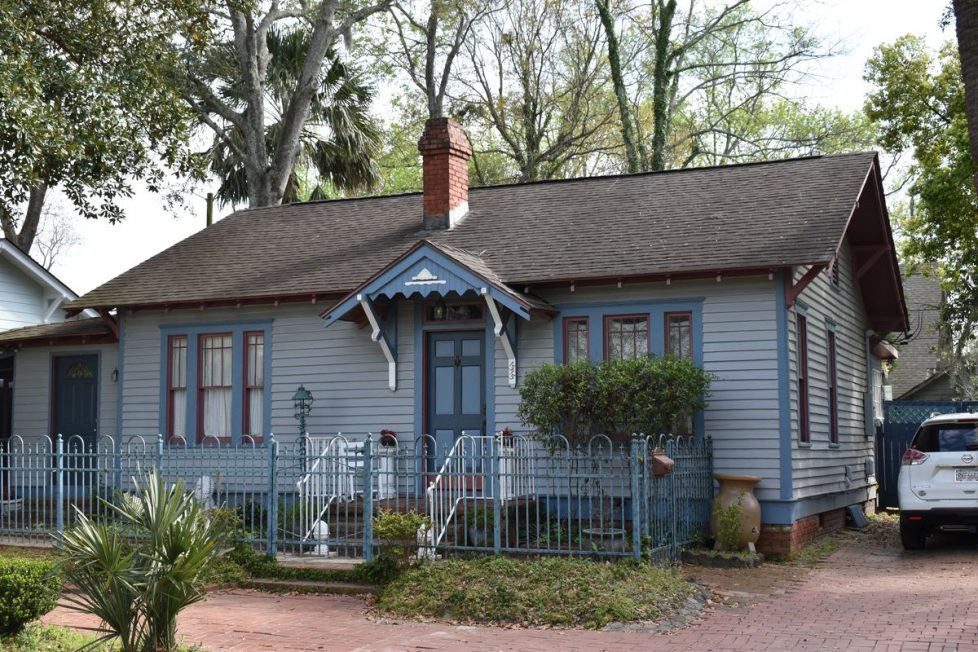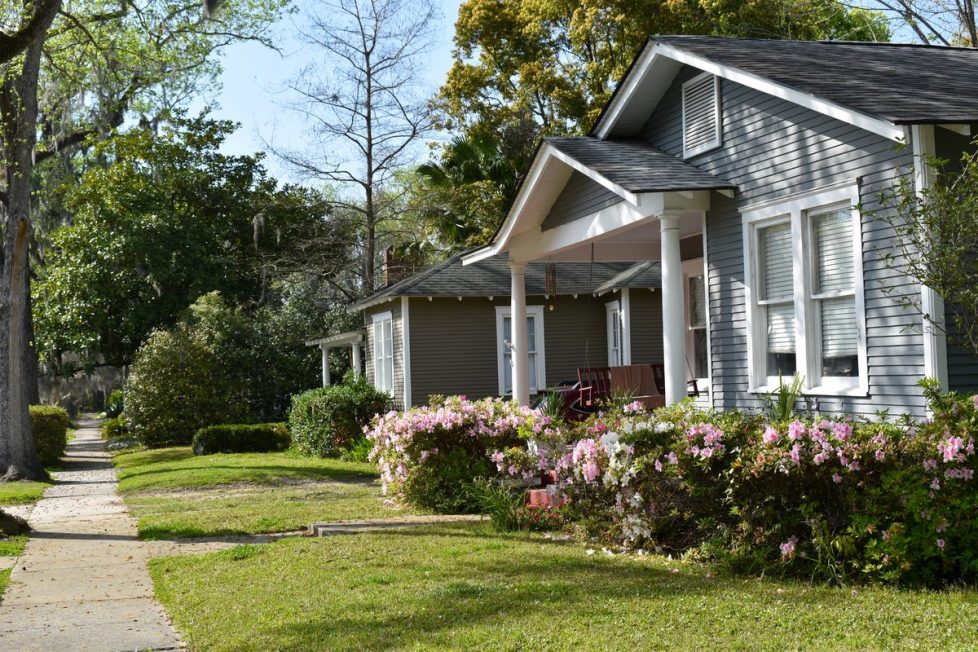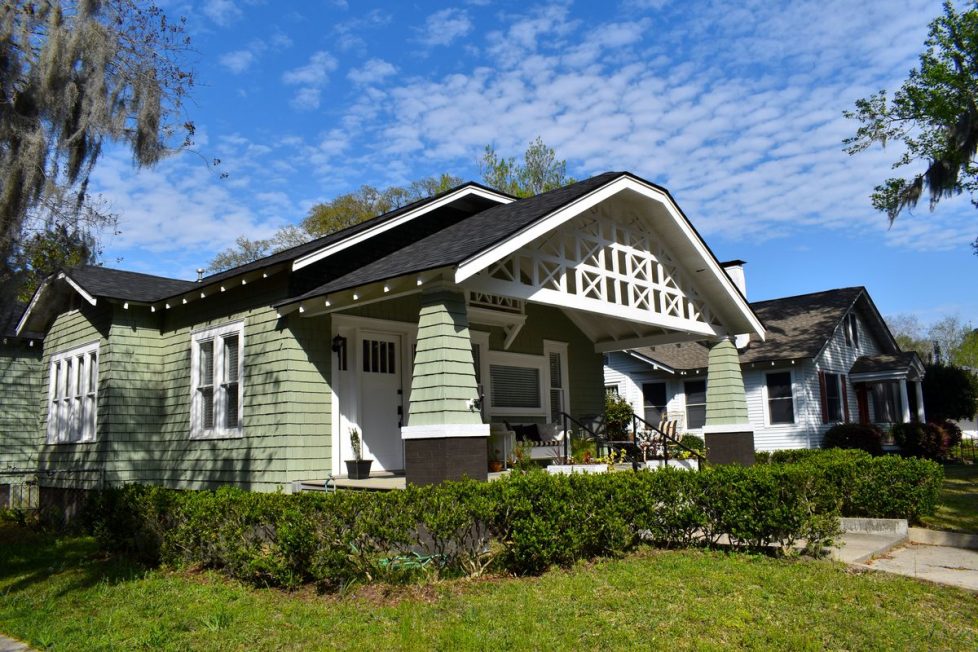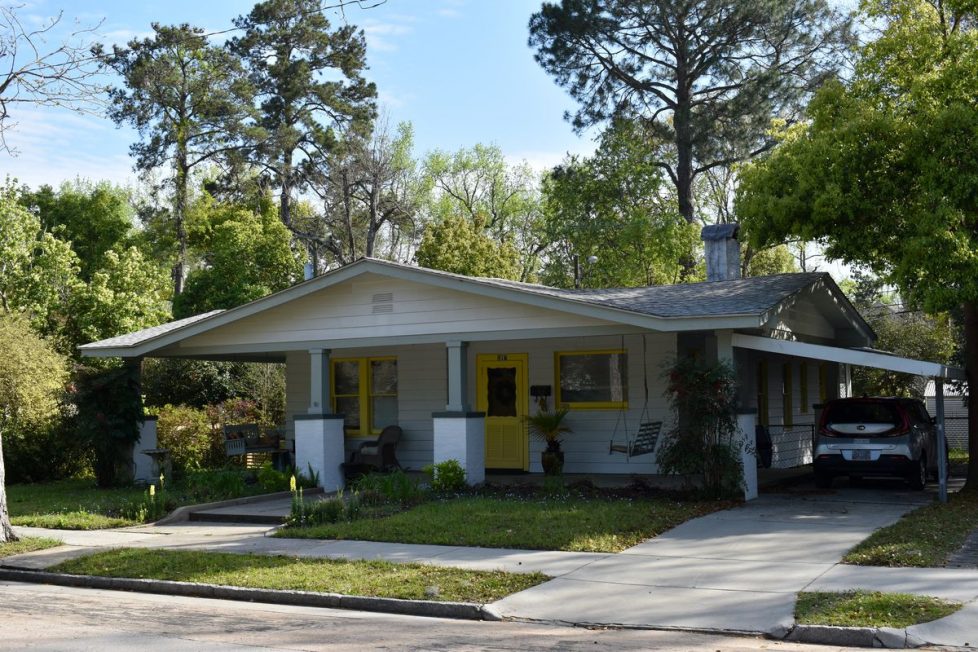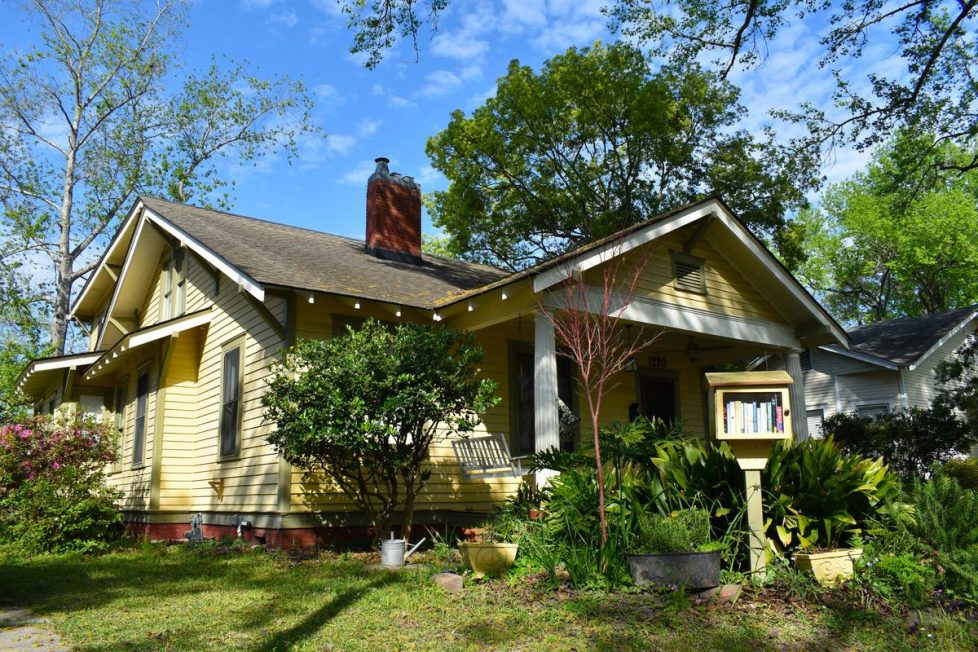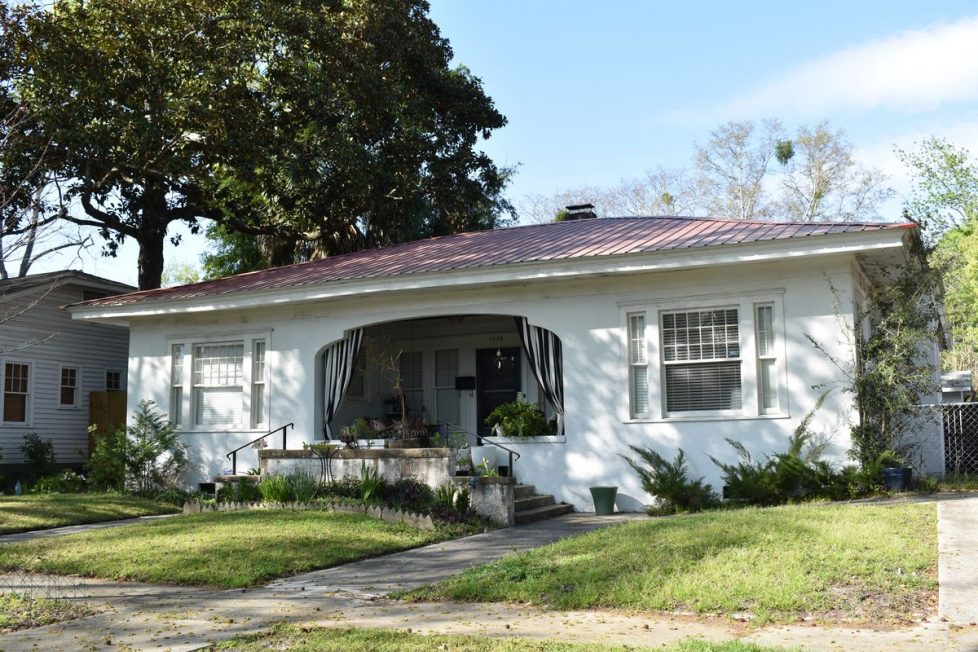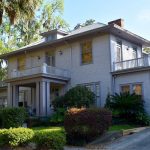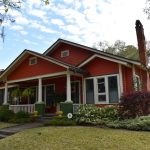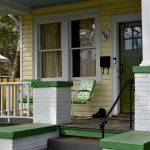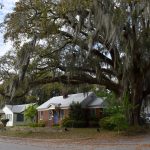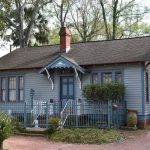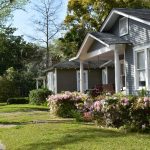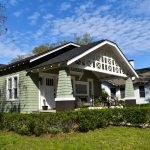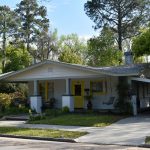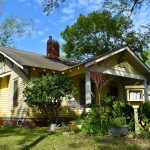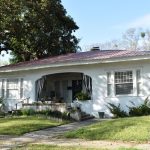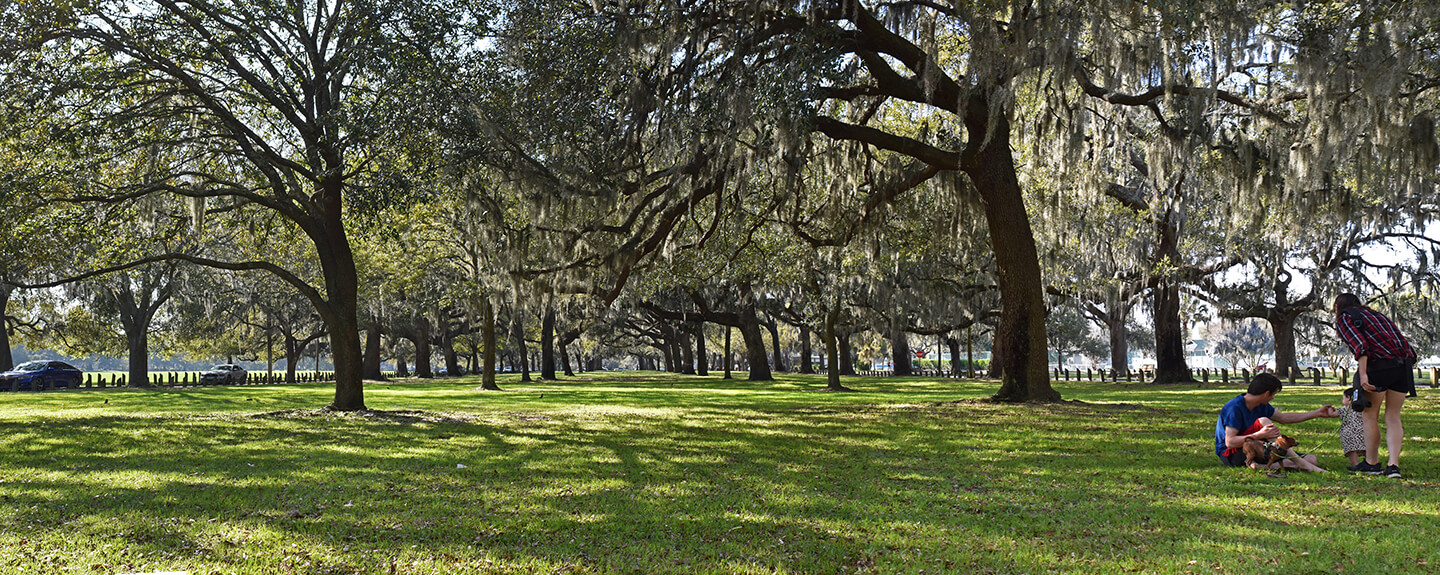
DAFFIN PARK/PARKSIDE PLACE
In a city internationally famous for its beauty and urban planning integrity, Daffin Park/Parkside Place is often enormously underappreciated. It features a large city park designed by one of America’s prominent twentieth-century urban planners, a highly intact neighborhood of outstanding arts and crafts style houses, and Georgia’s most intact minor league baseball stadium.
Daffin Park takes its name from Philip Daffin, the first chairman of the Savannah Park and Tree Commission. The park’s design was conceived by John Nolen of Massachusetts. Nolen was one of America’s foremost urban planners who helped found the American Institute of City Planners in 1917 (which is now the American Planning Association). His plan for Daffin Park features many of the hallmarks of the City Beautiful Movement, including an oak tree lined mall with radial elements emanating from two prominent circles, a large-scale water feature, and many native plantings. The park was completed in 1909.
“This neighborhood is a highly desirable place to live due to its excellent in-town location, proximity to Daffin Park, architectural quality, and tight-knit community of people”
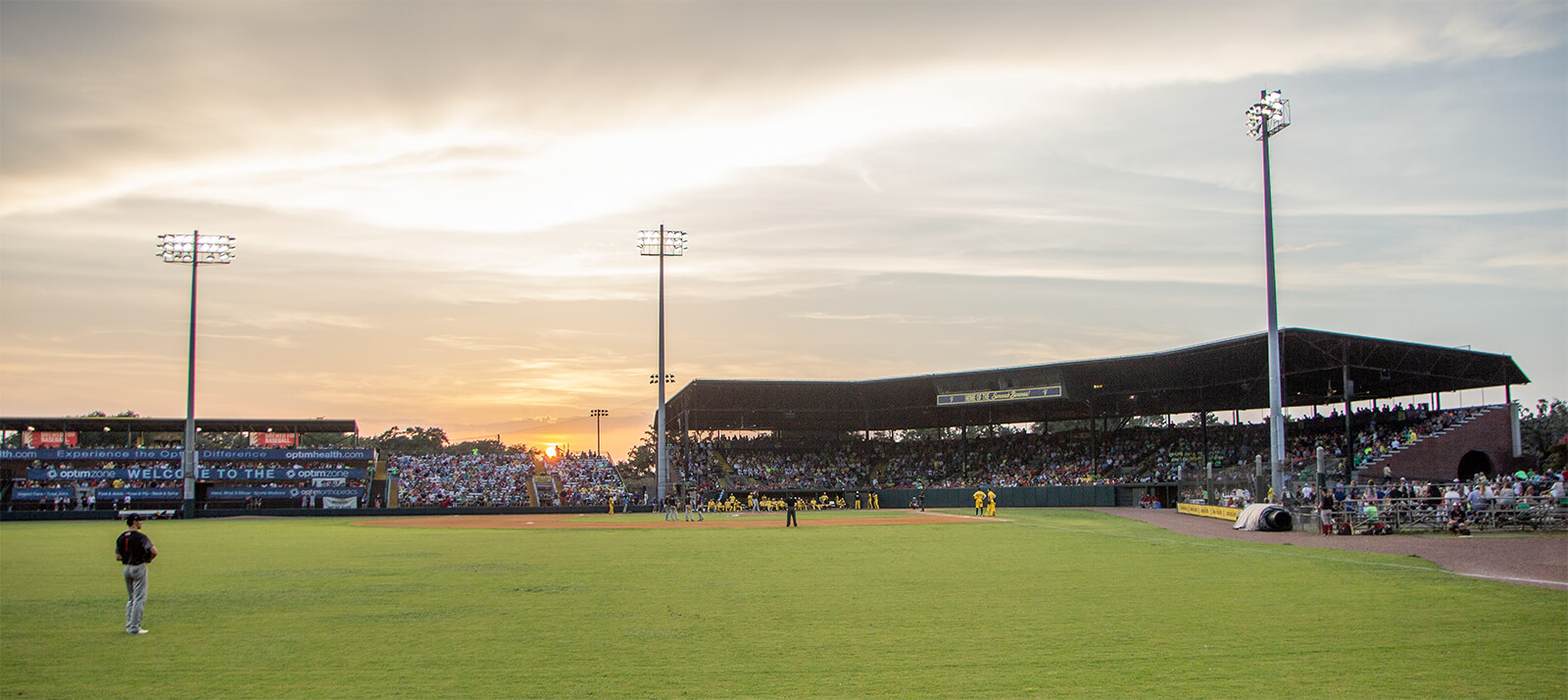
Inserted at the eastern end of Daffin Park is Grayson Stadium, which was built in 1941, replacing Municipal Stadium that had been constructed in the 1930s. Grayson Stadium is largely intact with its prominent brick arcade, super steel structure roof, and wooden bleachers. The stadium continues to serve as the home for Savannah’s Minor League baseball team– The Savannah Bananas.
In 1916, Parkside Land Company established a subdivision immediately adjacent to the south of Daffin Park. Named Parkside Place, the neighborhood was composed of twenty square blocks, laid out to align with the grid pattern of neighboring subdivision, Chatham Crescent. The north-south streets were named for a variety of trees, as was customary for the time.
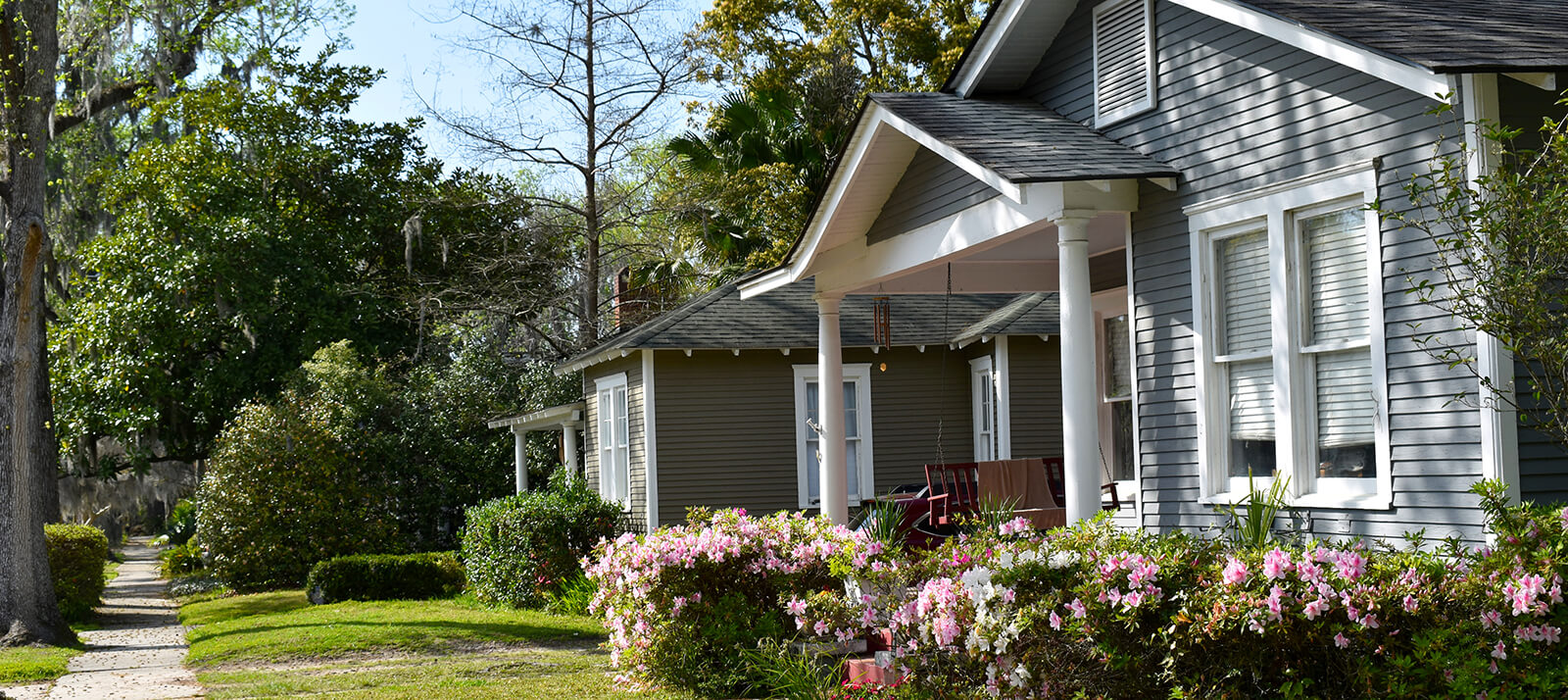
The architecture of Parkside Place has an overwhelming sense of unity and continuity. The majority of the houses are designed in the Craftsman Style, which was the most popular residential style in America and in Georgia during the early twentieth century. Craftsman houses, also called bungalows, feature low-pitched gable or hip roofs with wide overhanging eaves, decorative beams and brackets, and often generous front porches. Parkside Craftsman houses have considerable diversity of decorative details, but due to even setbacks and similarity of scale, they are in great harmony with one other. Parkside also features houses built in the Colonial Revival, Tudor Revival, and Modern styles of architecture. Though these houses differ in style from those immediately surrounding them, the effect is one of unity due to the outstanding planning principles at work in the district.
Parkside Place is further enhanced by its mature landscape of live oaks, crape myrtles, and sweet gum trees. Old azaleas and camellia bushes can be found in abundance throughout the district.

Today, this neighborhood is a highly desirable place to live due to its excellent in-town location, proximity to Daffin Park, architectural quality, and tight-knit community of people. The district’s historic resources are among the finest in the State of Georgia, and it provides a high quality of life for its residents.
